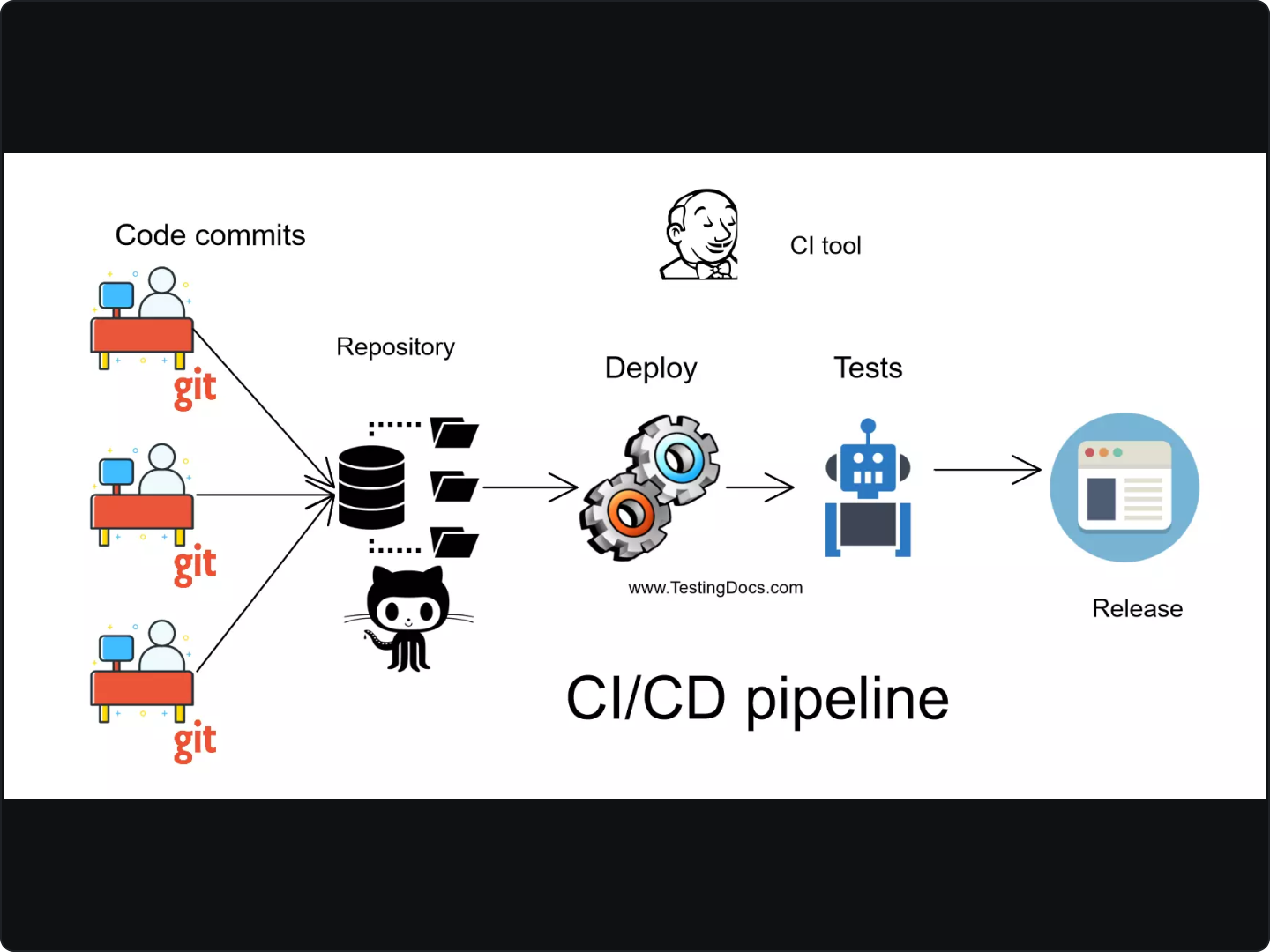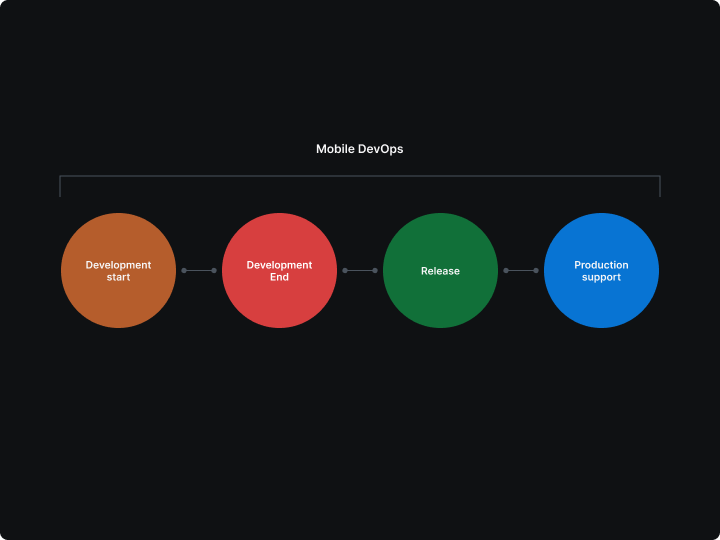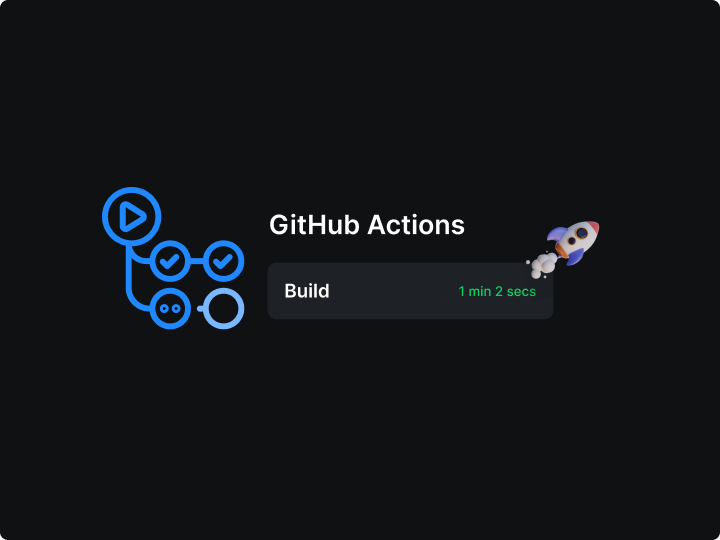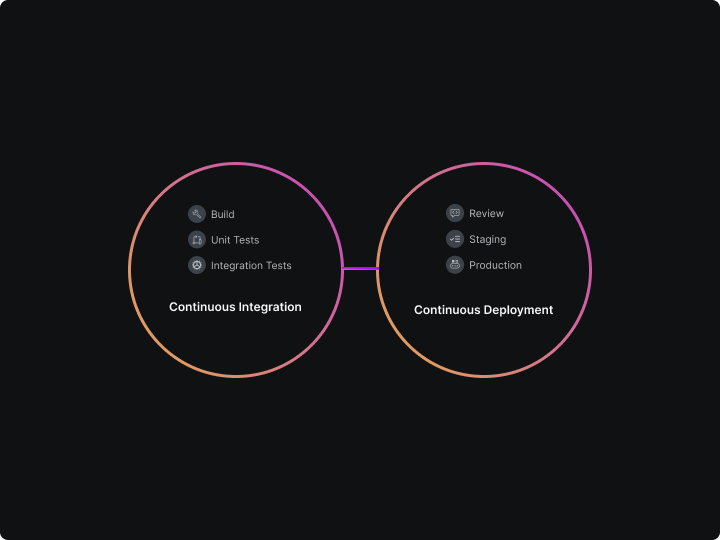Mobile development has undergone a monumental transformation over the past decade. With new technologies, methodologies, and user expectations, how we develop, deploy, and maintain applications is continually evolving.
Mobile DevOps is a methodology that extends the principles of DevOps specifically to mobile app development. This tailored strategy recognizes the distinct needs of mobile app development, such as quicker release cycles, a higher emphasis on user experience, and the need for robust security measures.
This accelerates the development process and ensures that the end product is of high quality and meets user expectations.
Understanding Mobile DevOps
Mobile DevOps is an approach that merges the traditional practices of DevOps with the unique requirements of mobile app development. This methodology extends beyond application deployment and operation; it encompasses a complete lifecycle management system tailored for mobile apps, prioritizing rapid delivery, high-quality user experiences, and robust security protocols.
- It addresses specific challenges inherent in mobile app development, such as handling multiple device types, operating systems, and network conditions.
- Unlike traditional web applications, mobile apps require a more nuanced approach to testing, deployment, and monitoring, considering the diverse nature of mobile ecosystems.
How is it different from traditional DevOps
The core difference between MobileDevOps and other forms of DevOps lies in the unique challenges presented by mobile app development:
- Diverse Device Ecosystem: Mobile apps must function seamlessly across a wide range of devices, each with different screen sizes, hardware specifications, and operating systems. This necessitates a more comprehensive testing and deployment strategy.
- Frequent Release Cycles: Mobile apps typically have faster release cycles compared to traditional software, driven by user demand and competitive markets. MobileDevOps must support this agility without compromising on quality.
- User-Centric Approach: Mobile DevOps emphasizes user experience and feedback more. The process includes continuous monitoring of user interactions and rapid iterations based on this feedback.
- Network Variability and Offline Functionality: Unlike traditional web applications, mobile apps must gracefully handle varying network conditions and provide offline functionality, which requires specialized testing and optimization.
Beyond traditional DevOps, there are other specialized forms such as Web DevOps or DataOps.
- WebDevOps typically deals with applications that are accessed through web browsers, focusing on aspects like server optimization, browser compatibility, and web security. In contrast, MobileDevOps must account for native app functionalities and mobile-specific UX/UI considerations.
- DataOps is centered around data management, data quality, and data analytics. While these are important in MobileDevOps, the latter also emphasizes real-time application performance monitoring and user engagement analytics specific to mobile platforms.
Key Components
Integrating Development and Security (DevSecOps)
Integrating security into the development process, known as DevSecOps, ensures that security measures are not an afterthought but a fundamental part of the development lifecycle.
Key Focus:
- Implementing automated security testing tools within the CI/CD pipeline.
- Conducting regular code reviews and vulnerability assessments.
- Ensuring compliance with data protection regulations.
Enhancing Developer Experience (DevEx)
Developer Experience (DevEx) focuses on creating an environment where developers can work efficiently and effectively. This includes streamlined workflows, automation of repetitive tasks, and providing the right tools and resources.
Key Focus:
- Adoption of IDEs and tools tailored for Android development, like Android Studio.
- Utilizing plugins and extensions to speed up development tasks.
- Implementing automated testing and debugging tools.
Continuous Integration and Deployment Pipelines
CI/CD pipelines are crucial in MobileDevOps for automating the building, testing, and deployment processes.
- Automated Testing: Implementing automated testing frameworks like Espresso for Android to ensure quality with every build.
- Seamless Deployment: Using tools like Fastlane to automate the deployment of apps to various app stores and beta testing platforms.
The Necessity of DevOps
Mobile DevOps is not a one-size-fits-all solution; its effectiveness depends on the team's structure, project nature, and organizational goals.
- Small to Medium-sized Development Teams: For teams with limited resources, this can streamline processes, automate repetitive tasks, and improve efficiency. Smaller teams benefit significantly from the automated testing and deployment aspects.
- Large Enterprises and Complex Projects: In larger teams, especially those working on complex projects with multiple dependencies, it helps maintain consistency, manage complexities, and ensure seamless collaboration across departments.
Criteria for Suitability
Not every team needs MobileDevOps. Here are key criteria to consider:
- Development Cycle Frequency: Teams with frequent release cycles will find it particularly beneficial, as it streamlines the process from development to deployment.
- Need for Scalability: Teams that need to scale quickly, handle multiple projects, or manage large codebases will benefit from robust automation and process management.
Benefits Across Various Team
Different types of teams can extract varied benefits from MobileDevOps:
- Agile Teams: For teams following Agile methodologies, It complements the iterative development process, ensuring quick feedback implementation and continuous improvement.
- Remote and Distributed Teams: It provides a cohesive framework that can greatly assist remote teams, ensuring consistency and efficiency across geographically dispersed members.
Crafting Your Strategy
Before diving into Mobile DevOps, it's essential to understand the prerequisites and lay a strong foundation.
- Team Alignment: Ensure that all team members understand the value and principles of Mobile DevOps. This might involve training sessions or workshops.
- Tool Assessment: Evaluate and select the right set of tools for version control, continuous integration, testing, and deployment that align with your project needs. Tools like Git for version control, Jenkins for CI/CD, and Selenium for testing are popular choices.
Implementation
- Define Goals and Objectives: Clearly outline what you aim to achieve with Mobile DevOps - be it faster deployment, improved app quality, or better team collaboration.
- Infrastructure Setup: Establish a robust infrastructure for continuous integration and delivery. This includes setting up servers, configuring databases, and ensuring network security.
Execution and Tools
Building Pipeline
A well-structured pipeline is crucial for automating the development process, ensuring quality, and facilitating continuous delivery.
- Version Control System Setup: Begin with a robust version control system like Git. This is essential for tracking changes, collaborating, and maintaining a history of your project.
- Continuous Integration (CI) Configuration: Set up a CI system using tools like Jenkins or Travis CI. This system should automatically build and test your code with each commit, ensuring immediate detection of issues.
Implementing Continuous Deployment (CD)
The pipeline's CD aspect focuses on automating your application's deployment.
- Automated Deployment Tools: Utilize tools like Fastlane to automate the deployment process to app stores and beta testing platforms.
- Deployment Strategies: Implement blue-green deployments or canary releases to minimize downtime and reduce the risk of introducing new versions.

Integration of Testing
Testing is a critical component of the pipeline, ensuring the quality and reliability of your app.
- Automated Unit Testing: Implement unit tests to validate each part of your code. Tools like JUnit are essential for this phase.
- UI and Integration Testing: Use tools like Espresso for UI testing and validate the integration of different components.
Measuring Success
Metrics and Analytics
Success isn't just about delivering the app; it's about delivering it in a way that meets or exceeds objectives. This is where metrics and analytics play a vital role.
- Defining Relevant Metrics: Identify the key performance indicators (KPIs) that align with your project goals. These could include deployment frequency, failure rate of new releases, and mean time to recovery (MTTR).
- Utilizing Analytics Tools: Tools like Google Analytics for Firebase can provide insights into user behavior, app performance, and engagement.
Monitoring Application Performance
Post-deployment monitoring is crucial for understanding the real-world performance of your app.
- Performance Metrics: Focus on metrics like load time, crash rates, and API response times. Tools like New Relic or Datadog offer comprehensive monitoring capabilities.
- User Experience Tracking: Use session recordings and heatmaps to understand how users interact with your app, utilizing tools like Hotjar.
Feedback Loops and Continuous Improvement
Continuous feedback loop is a key element, allowing for ongoing improvements.
- User Feedback: Collect and analyze user feedback through app reviews, support tickets, and direct user surveys. This feedback should inform future development priorities.
- Iterative Development: Utilize the insights gained from analytics and feedback to make iterative improvements to the app.
Mobile DevOps is more than a methodology; it's critical for success in today's fast-paced Android development landscape. By embracing Mobile DevOps, developers, and teams can enhance efficiency, security, and responsiveness to user feedback. This approach is vital for creating high-quality, resilient apps that meet the demands of the modern user.



